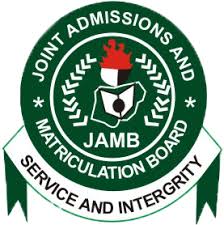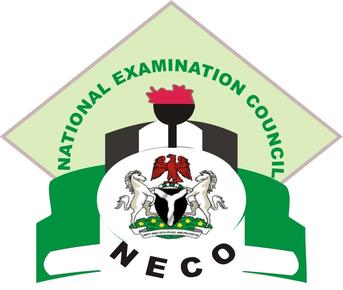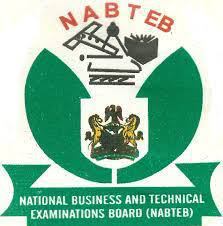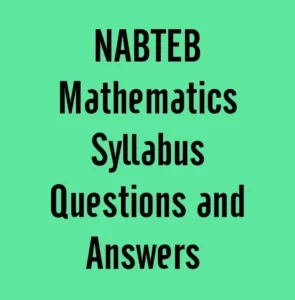NABTEB Mathematics Syllabus Questions and answers 2024
MATHEMATICSThis course is designed to provide trainees with a sound knowledge of mathematical concepts as
aids in the conceptualization, interpretation, and application of the technical soft wares and hard
wares as well as to enhance their mathematical problems – solving ability in their various trades.
It is also to form a basis for post secondary technical education.
All candidates are expected to answer questions from General Mathematics while those in
Secretarial Studies and Book-Keeping are in addition to answer questions from Commercial
Mathematics.
Examination Scheme:
The examination consists of Two Papers:
002-1 – Paper I (1½ Hrs)
002-2 – Paper II (2½ Hrs)
The total mark for both papers is 150.
1. Paper I: is made up of 50 multiple-choice items for 50 marks. All candidates are expected to attempt this paper.
2. Paper II: Consists of three sessions namely A, B and C.
(a) Section A consists of five questions from General Mathematics. All candidates
are expected to attempt all questions. This section carries 40 marks.
(b) Section B consists of six questions. All candidates are to attempt any four of the six questions except Secretarial and Business candidates who are to attempt only two questions. Each question carries 15 Marks.
(c) Section C consists of four questions from Commercial Mathematics for Secretarial and Business candidates only. Candidates are expected to attempt any two out of the four questions. Each question carries 15 marks.
Candidates should be familiar with units-length, area, cubic capacity, mass – and their abbreviations. Any currency unit used will be defined.
Examination Materials:
Candidates are allowed to use the recommended mathematical statistical tables in the examination hall for the papers. It is strongly recommended that schools/candidates obtain copies of these tables for use through the course.
Candidates should bring rules and complete mathematical instrument set for all papers. Borrowing of instruments from other candidates in the examination hall will not be allowed. The use of noiseless, cordless and non-programmable calculators is allowed. If required, the following will be provided for any paper.
(i) Graph paper ruled in 2mm squares
(ii) Plain drawing sheets for construction work
GENERAL MATHEMATICS
Topic/objectives Contents Activities/Remarks
1. Number Bases. Count and perform Basic arithmetic operations in different bases.
(i) Number bases – counting in different bases: Converting from one base to another; addition, subtraction, multiplication and division in different bases.
(ii)_Modules arithmetic Arithmetic operation in different bases should exclude fractions. Comparison between place value system and additive system should be stressed e.g. 4520 means 4 thousands, 5 hundreds, 2 tens and 0 unit: 26 in base eight means 2 eight and 6 unit etc.
Relate to market days etc. Truth sets (solution sets) for various open sentences e.g. 3 x 2 a(mod)48+y=4(mod)9
2. System Internationale Unit. Solve problems involving S.I. and imperial units.
Difference between S.I. and Imperial units of linear measures: conversion of S.I. units and vice versa: mm to m; m to km and vice versa; exercises involving time – hours, minutes and seconds The basic units of S.I. units must be emphasized e.g the basic units of mass, length, time, area, volume are gramme, metre, second, square metre, cubic metre respectively. The advantages of S.I. units over the imperial units should be deduced by students; the use of S.I. units in science, social sciences should be brought out and exercise should be related to practical use.
3. Fractions Solve arithmetic operations involving vulgar and decimal fractions.
The law of equivalence of decimals and vulgar/common fractions. Vulgar fractions to decimal fractions and vice versa. Basic processes – addition, subtraction, multiplication and division – applied to decimals and fractions (vulgar/common fractions.) Decimal fraction should be confined to two places e.g. 0.13 x 2.14 etc.
Interrelationship between the different fractional systems e.g. 0.5 x 0.2 = ½ x 1/5 and 2/5 = 0.4 – 40% etc should be stressed.
4. Standard Forms. Standard forms, decimal places and Express numbers significant figure. Rounding off number in standard forms and give answer in the required number and to the required of decimal places ad significant figures; number of significant figures express number in standard forms; A x 10n where 1<A<10 and n is either – ve decimal places. or + ve integer
5. Ratio and Ratio and proportion. Relate these to the Proportion . Relationship between ratio and students’ work in science Solve problems on proportion representative fraction and technical subjects. ratio and Examples and exercises on direct and proportion. inverse ratios and proportions including representative fraction.
6. Variation Direct, inverse and partial variations. Joint variations. Applications to simple practical problems.
7. Percentages, Percentages, profit and loss calculation. The means of Profit and Loss. Conversion of fraction and decimal to transactions e.g. money, Apply the percentages and vice versa; percentage cheques, money orders, principles of change, commercial arithmetic including postal orders etc. should percentages to profit and loss, small decimal fractions. be mentioned. fractions and Application of profit and loss to decimals. commerce generally.
8. Simple Interest Simple Interest – Calculation of Principal (P), Interest (I), Rate (R) and Time (T) using I = PRT 100 Transformation of the Solve problems formula for P.R and T involving simple should be clear. interest.
9. Logarithms Apply logarithms, square And square root tables in calculations.
Based 10 logarithms tables and anti- logarithm tables, calculation involving multiplication, division, powers and roots using logarithm tables. Examples and exercise from simple to complex combination of multiplication, division, powers and roots of numbers e.g. √172.7 x 15.42 2.613 etc.
10. Indices Indices as a shorthand notation. Laws of indices:
(a) a x x a y=ax+y
(b) a x a y=ax-y .
(c) (ax ) y = a xy The use of indices in Apply the laws of science and technical indices in subjects should be simplification and emphasized and exercises calculation. should be related to practical use. Trainers should be encouraged to discover
NABTEB English Language Syllabus Questions and answers 2024
Categories: NABTEB O' Level and Advanced Questions and Answers Expo Runz
0 Responses





